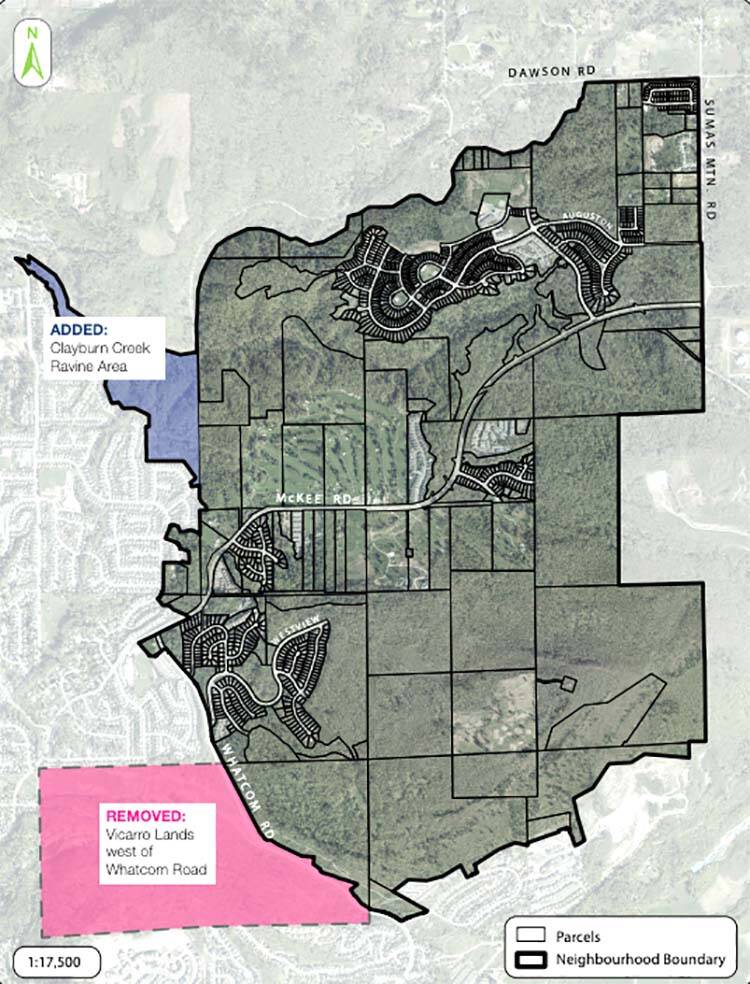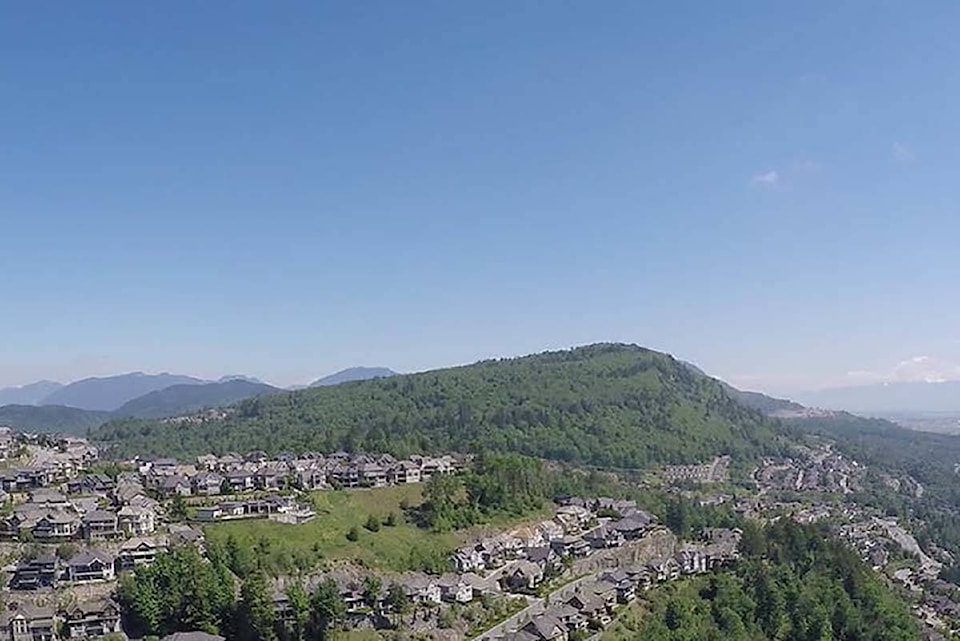The City of Abbotsford is moving to the next step in its plans for the McKee neighbourhood on Sumas Mountain.
City council voted at its meeting on Feb. 7 for the plan to move to the third of four phases – the development of the first draft, including a technical analysis of infrastructure needs and a complete transportation impact assessment.
The McKee neighbourhood is mountainous area known for its open space and trails. It is a largely undeveloped area of approximately 2,080 acres (842 hectares), according to the city.
The city website says the planning process will “develop a vision for a new residential neighbourhood anchored by a neighbourhood centre and connected with trails, parks and open spaces.”
“The McKee Neighbourhood Plan presents an opportunity to combine homes, schools, parks trails and environmental amenities into a neighbourhood that meets residents’ daily needs close to home.”
RELATED: Planning to begin for new Sumas Mountain developments
The first phase involved assessing the development potential of the land and determining what land should be protected.
Senior planner Mitchell Comb told council that those crucial areas have been identified – such as in habitats of the Pacific water shrew and mountain beaver.
“In stage three, we’ll start coming up with some of the policies: How do we interact with those (areas)? Do we want people in those areas? Do we not? We’ll delve into that a little bit further,” he said.
The second stage looked at various land-use options and included preparing a concept plan with a preliminary technical analysis of infrastructure needs.
That stage also sought public input – primarily online due to the pandemic. In September 2020, 2,653 postcards were mailed out to each address within the plan.
An online questionnaire was available from Sept. 16 to Oct. 4, 2021, resulting in 378 responses.
Those who responded ranked their top-four priorities (in order) as: protecting environmentally sensitive areas, creating a trail network that is integrated within residential development, sensitively integrating development that respects the integrity of natural areas, and providing both on- and off-road active transportation options.
Abbotsford’s Official Community Plan, adopted in June 2016, provides a vision and framework for how the city will grow to a population of at least 2016.
Approximately 25 per cent of all future growth is expected within “new neighbourhoods.” Besides McKee, these areas include the UDistrict, the historic downtown and the city centre.
The third stage of the McKee neighbourhood plan includes the opportunity for the public to provide feedback online at letstalkabbotsford.ca and to attend workshops and pop-up events (depending on pandemic restrictions).
As well, stakeholders, such as property owners and community groups, will be invited to meetings.
The McKee plan has a budget of $737,000, with almost $261,000 of that having been spent so far.
In early 2020, city council rejected the “We Town” concept – which would have housed 30,000 people in futuristic highrises – as part of the plan.
But the developers’ revised proposal for the “Abbotsford Tech District” – creating space for 18,000 technology workers – has not been ruled out.
RELATED: Can the ‘Abbotsford Tech District’ rally more local support than We Town?
vhopes@abbynews.com
Like us on Facebook and follow us on Twitter

